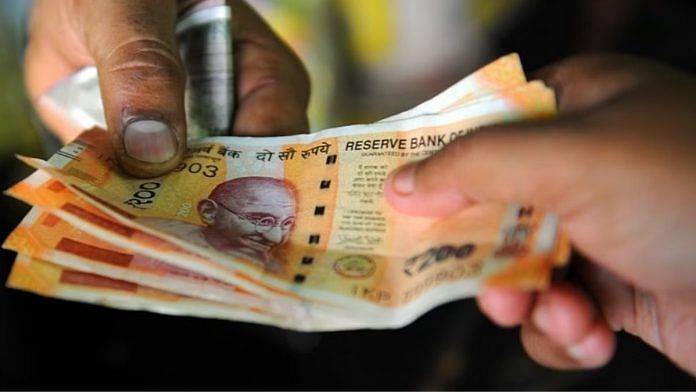New Delhi: Household and private sector savings are crucial for any healthy economy, but what exactly drives these savings in India? A research paper published last week has found empirical evidence for what may seem like a common-sense answer — savings are primarily affected by inflation and access to banking.
For their study, published in the peer-reviewed journal International Review of Economics & Finance, researchers Soumya Kanti Ghosh, chief economist at the State Bank of India, and Hiranya K Nath of Sam Houston State University in Texas, USA, dug through 50 years of macroeconomic, demographic, financial, and external sector (export and import) statistics from India.
The data they analysed, dating from 1960 to 2016, revealed that real per capita income — or earnings on an inflation-adjusted basis — and access to banking facilities are the most important determinants of savings in India. Savings is defined as the income left over after consumption expenditure has been spent.
Through their analysis of these statistics, the scholars arrived at three important conclusions.
One is that an increase in real per capita income results in increased household and private savings — essentially, as people earn more in real terms, they tend to save more.
The second is that inflation decreases both household and private savings. And the third finding is that access to banking is a strong determinant of household and private savings, in the long and the short run.
“These results seem to suggest that policies that are intended to increase per capita income, lower rate of inflation, and increase access to banking will go a long way in increasing private savings in India,” the paper noted.
Also read: Real estate over banks — where the average Indian household is putting its savings
How income and inflation affect savings
According to the study, per capita income plays a significant role in driving private savings in the long run.
The authors write that a one percentage point increase in per capita income leads to a 0.37 per cent increase in the private saving rate in the long run.
Higher income can boost savings in the short term too, the researchers found.
“Even in the short-run, the impact of changes in per capita income on changes in saving rate is positive and statistically significant. Thus, in India, an increase in current income is important for higher private saving,” the report read.
However, the study also revealed a negative relationship between savings and inflation in India.
The authors noted that a 1 percentage-point increase in inflation led to a 1.23 percentage-point decrease in private saving rate in the long run. The assumption here, of course, is that all other factors remain equal, or what is called ceteris paribus.
The authors cite two possible hypotheses to explain the inflation-savings relationship. One is that people could be trying to maintain their current level of expenses amidst rising prices, and the other is uncertainty about the future value of their present assets.
“It appears that as inflation increases, people tend to dissave in order to maintain a certain level of expenditure,” the paper noted. “This may also indicate that higher inflation creates uncertainty regarding the future value of accumulated savings and reduces the rate of expected returns on savings and as such people save less.”
The rate of savings also goes down as the “dependency ratio” increases, the study found. This ratio represents the proportion of dependents, such as children and senior citizens, in comparison to the working-age population.
“These results suggest that as the number of young and old people increases relative to the working age population, the latter group has to spend more to support the larger dependent population, reducing their savings in the short run,” the report noted. “With less flexibility to mobilise resources in the short time horizon may leave little room but to spend more of their income on those dependent groups.”
Similarly, the study showed that bank density — the number of available banks per person — has an inverse correlation with savings. That is, a greater number of individuals per bank typically results in decreased savings, while a higher density of banks per unit of population tends to increase savings.
Why do savings matter?
The significance of savings lies in their potential to fuel investments in the economy.
When people set aside money in avenues to grow its value, they contribute to the creation of wealth, ultimately improving the lives of more people.
The study acknowledged that post-liberalisation, India has witnessed a steady rise in per capita income since 1993 and that the historical steps taken to open up banks both in rural and urban India could be responsible for increasing bank accessibility.
In their policy recommendations, the authors said that macroeconomic policies aimed at boosting productivity, lowering inflation, and increasing real income could help elevate the savings rate in India. They also said that policies facilitating the “proliferation of banking” would “help mobilise savings”.
(Edited by Asavari Singh)
Also read: India’s savings rate exceeds UK, US, Brazil’s. Real challenge is turning it into investment



